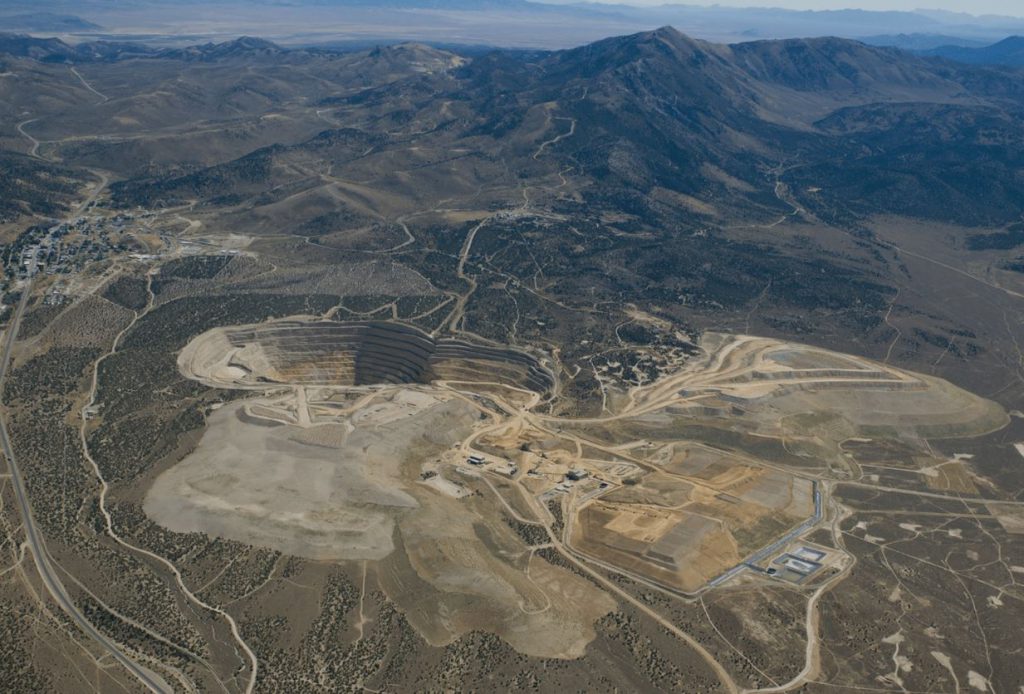i-80 Gold drills 19.8 g/t gold over 33.2 metres at Ruby Hill, Nevada

i-80 Gold Corp. [IAU-TSX; IAUCF-OTCQX] reported initial stepout drilling to test the southern extension potential of the Ruby Deeps deposit has intersected multiple zones of high-grade mineralization at the 100%-owned Ruby Hill property, located in Eureka County, Nevada.
Highlight results from initial southern step-out drilling in the Ruby Deeps horizon include iRH22-06 with four intervals, specifically, 8.4 g/t gold over 3.7 metres (0.25 oz/ton – 12.0 ft); 8.2 g/t gold over 22.4 metres (0.24 oz/ton – 73.5 ft), including 14.1 g/t gold over 7.2 metres (0.41 oz/ton – 23.5 ft); 6.5 g/t gold over 4.3 metres (0.19 oz/ton – 14.0 ft); and 19.8 g/t gold over 33.2 metres (0.58 oz/ton – 109.0 ft).
Hole iRH22-06 is the southernmost core hole drilled to test the Ruby Deeps horizon and confirms the potential to expand high-grade mineralization within the Ruby Deeps Zone that remains open along strike to the north and south, and to the east. In the southern portion of the deposit, drilling is intersecting multiple (four) structures, suggesting the potential to define resources in multiple horizons. As in previous drilling in the Ruby Deeps Zone, ground conditions appear to be very favourable and intersection widths have met or exceeded expectations. The primary zone, located beneath the “Bullwacker” sill, returned an impressive 19.8 g/t gold over 33.2 metres, interpreted to be near true width.
Additional drilling is now being completed in the southern portion of the deposit. The Ruby Deeps deposit is comprised of the 426 Zone; the upper part of the deposit interpreted to consist of sub-vertical mineralization hosted within or proximal to the northeast striking 426 fault structure, and the deeper Ruby Deeps Zone; a flat-lying, north-south striking, sulphide zone located in the hanging wall of the Holly fault structure. Both zones remain open for expansion.
Due to substantial success of the 2022 program at Ruby Hill has been expanded such that more than 20,000 metres of drilling will be completed. This program is focused on defining, and expanding, the Ruby Deeps Deposit, including the upper “426” horizon, while also testing several high-potential exploration targets on the Property. Initial results from drilling in the 426 horizon are expected in the coming weeks.
The ongoing infill and step-out drill program will aide in the advancement of the Company’s plan to develop an underground mine at Ruby Hill, accessed via ramp from the Archimedes open pit. Infill drilling is being completed for initial mine planning and to upgrade resources for the completion of an economic study. Step-out drilling is also being completed with a focus on expanding mineralization in advance of completing a revised resource estimate at year-end. The current program at Ruby Hill is one of several ongoing and planned drill programs on i-80 projects in 2022 that collectively are expected to comprise in excess of 50,000 metres.
It is expected that refractory mineralization from the planned underground operation at Ruby Hill will be trucked to the company’s Lone Tree facility, once operational, and oxide mineralization can be processed on-site at the existing heap leach pad, or at the existing CIL plant. i-80’s substantial existing infrastructure at Lone Tree and Ruby Hill is expected to reduce potential exposure to the current inflationary environment.
“It is extremely encouraging to see multiple zones of high-grade mineralization developing in the southern portion of the Ruby Deeps zone, continuing to demonstrate the property’s potential to host a world-class, Carlin-type, gold deposit,” stated Ewan Downie, CEO of i-80. “In addition to successfully expanding mineralization in the primary target zones, significant alteration and mineralization has been observed in multiple exploration targets that have been tested. The footprint of the alteration system at Ruby Hill is comparable to Nevada’s most productive gold districts. I have been fortunate to have been a part of several significant discoveries and the delineation of major deposits, but perhaps have not participated in a project with the upside potential we are seeing at Ruby.”
